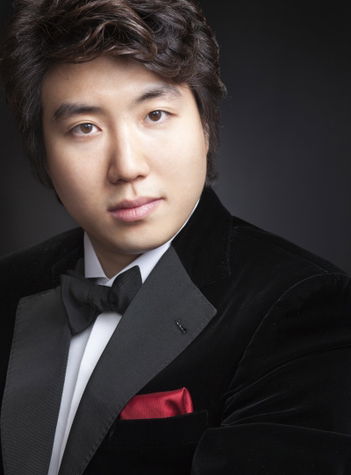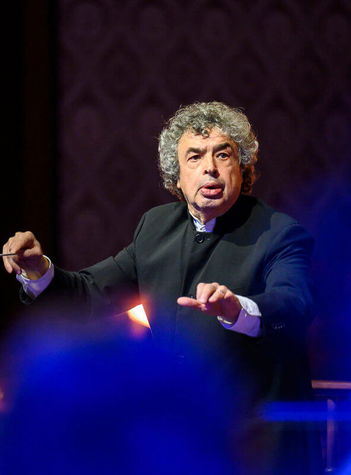Programme
Felix Mendelssohn Bartholdy
Symphony No. 4 in A major, Op. 90 “Italian”
Igor Stravinsky
Pulcinella, a concert performance of the ballet music
Secure your seat for the 2025/2026 season – presales are open.
Choose SubscriptionThe people of Hamburg are in luck. During the Czech Philharmonic’s April tour, they’ll be the only audience to hear both of the programmes the orchestra has prepared. The second evening of the residency at the magnificent Elbphilharmonie will bring Mendelssohn, Bartholdy, and Stravinsky to the stage. After Mendelssohn’s Italian Symphony, the orchestra—under the direction of Chief Conductor Semyon Bychkov—will perform The Rite of Spring.
Felix Mendelssohn Bartholdy
Symphony No. 4 in A major, Op. 90 “Italian”
Igor Stravinsky
Pulcinella, a concert performance of the ballet music
Stefanie Irányi soprano
Martin Mitterrutzner tenor
Jongmin Park bass
Semyon Bychkov conductor
Czech Philharmonic

Stefanie Irányi soprano
Martin Mitterrutzner tenor
Jongmin Park bass

Jongmin Park, South Korean bass and native of Seoul, studied singing at the Korea National University of Arts. As a member of the Academy of La Scala, he was guided by Mirella Freni, Luciana Serra, Luigi Alva, and Renato Bruson.
Between 2010-2013 seasons, he was a member of the ensemble at the Hamburg State Opera where he sang leading roles such as Sarastro, Colline, Sparafucile.
From the 2013-14 season, he was invited to join the ensemble at the Vienna State Opera where he performed the roles of Sir Giorgio (I Puritani), Vodník (Rusalka), Ramfis, Gremin, Basilio.
In 2014 he debuted at the ROH Covent Garden as Colline, and appeared at the BBC Proms in London and at the City of London Festival 2014.
He won the International Tchaikovsky Competition, the Song Prize winner at the BBC Cardiff Singer of the World 2015 and the Birgit Nilsson Wagner-Award at the Operalia.
His concert engagements have included Beethoven’s Symphony Nr. 9 with the London Symphony Orchestra, Mozart’s Vesperae solennes de Confessore at La Scala’s annual Christmas concert, Mozart’s Requiem at the Lech Classic Festival, Verdi’s Messa da Requiem with the KBS Symphony in Seoul, and Rossini’s Stabat Mater with the NHK Symphony in Tokyo.
He has performed solo recitals in Munich, Frankfurt and the Musikverein in Vienna. He will make his Wigmore Hall debut in 2017.
Semyon Bychkov conductor

In addition to conducting at Prague’s Rudolfinum, Semyon Bychkov and the Czech Philharmonic in the 2023/2024 season, took the all Dvořák programmes to Korea and across Japan with three concerts at Tokyo’s famed Suntory Hall. In spring, an extensive European tour took the programmes to Spain, Austria, Germany, Belgium, and France and, at the end of year 2024, the Year of Czech Music culminated with three concerts at Carnegie Hall in New York.
Among the significant joint achievements of Semyon Bychkov and the Czech Philharmonic is the release of a 7-CD box set devoted to Tchaikovsky’s symphonic repertoire and a series of international residencies. In 2024, Semjon Byčkov with the Czech Philharmonic concentrated on recording Czech music – a CD was released with Bedřich Smetanaʼs My Homeland and Antonín Dvořákʼs last three symphonies and ouvertures.
Bychkovʼs repertoire spans four centuries. His highly anticipated performances are a unique combination of innate musicality and rigorous Russian pedagogy. In addition to guest engagements with the world’s major orchestras and opera houses, Bychkov holds honorary titles with the BBC Symphony Orchestra – with whom he appears annually at the BBC Proms – and the Royal Academy of Music, who awarded him an Honorary Doctorate in July 2022. Bychkov was named “Conductor of the Year” by the International Opera Awards in 2015 and, by Musical America in 2022.
Bychkov began recording in 1986 and released discs with the Berlin Philharmonic, Bavarian Radio, Royal Concertgebouw, Philharmonia Orchestra and London Philharmonic for Philips. Subsequently a series of benchmark recordings with WDR Symphony Orchestra Cologne featured Brahms, Mahler, Rachmaninov, Shostakovich, Strauss, Verdi, Glanert and Höller. Bychkov’s 1993 recording of Tchaikovsky’s Eugene Onegin with the Orchestre de Paris continues to win awards, most recently the Gramophone Collection 2021; Wagner’s Lohengrin was BBC Music Magazine’s Record of the Year (2010); and Schmidt’s Symphony No. 2 with the Vienna Philharmonic was BBC Music Magazine’s Record of the Month (2018).
Semyon Bychkov has one foot firmly in the culture of the East and the other in the West. Born in St Petersburg in 1952, he studied at the Leningrad Conservatory with the legendary Ilya Musin. Denied his prize of conducting the Leningrad Philharmonic, Bychkov emigrated to the United States in 1975 and, has lived in Europe since the mid-1980’s. In 1989, the same year he was named Music Director of the Orchestre de Paris, Bychkov returned to the former Soviet Union as the St Petersburg Philharmonic’s Principal Guest Conductor. He was appointed Chief Conductor of the WDR Symphony Orchestra (1997) and Chief Conductor of Dresden Semperoper (1998).
Felix Mendelssohn Bartholdy
Symphony No. 4 in A Major (“Italian”), Op. 90
Allegro vivace
Andante con moto
Con moto moderato
Saltarello. Presto
On 3 February 1809, a son named Felix was born to the wealthy family of the banker Abraham Mendelssohn. He began playing piano and violin at the age of seven, at age nine he made a public appearance, and already at 12 he began composing. Wisely, Felix’s father did not stand in the way of the development of his son’s talent; to the contrary, he actively supported the boy—perhaps as a banker, he was well aware of how fleeting wealth was, and that the only thing that could immortalise his name was an act of artistic creativity. Felix was fortunate to have grown up surrounded by plenty in what was then one of Germany’s richest families, and never in his life did he have to concern himself with earning a living. Already as a child, he was composing symphonies, cantatas, songs, choruses, and attempts at musical drama. Many of these compositions (including symphonies!) were performed soon after they were written at regular Sunday household concerts, for which leading professional musicians were hired, so the young composer received immediate feedback—what would Antonín Dvořák have given to have had something like that! After the travels of his youth (Germany, England, Scotland, Italy), he became the conductor of the Gewandhaus Orchestra in Leipzig, and he served in that capacity continuously from 1835 (with the exception of the years 1841–1842) until the end of his life. As its conductor, he improved the Leipzig orchestra, establishing its outstanding reputation, which continues to this day.
Mendelssohn composed five mature symphonies. The Symphony in A Major (“Italian) was the third to be written, but based on the opus numbers assigned by the composer, it was his fourth. Mendelssohn’s first sketches for the symphony date from his journey to Italy in 1830/31. The Hamburg native was enthralled by sunny Italy’s joyous atmosphere and temperament. The young Felix sent home letters full of colourful accounts of everything he experienced and saw abroad, and he showed his talent as an artist by supplementing his descriptions with lovely drawings. The composer noted his sources of inspiration: “For most of my music I am indebted to things that are not, in fact, musical: ruins, paintings, the beauty of nature.” He also wrote that he did not begin sketching the symphony until he had visited Naples, because he said that experience must not be left out. Of course, there is no descriptive narrative of concrete scenery. Instead, the composer poured into his music the impressions that Italy made on him, so we can view the symphony’s individual movements as four pictures of Italian life through the eyes of a young German intellectual. The sunny Allegro vivace takes us to the joyous merriment of Rome’s carnivals. The Andante con moto was inspired by a religious procession with a dignified atmosphere interrupted only by two melodic, pastoral episodes, during which it is as if the observer momentarily diverted his gaze, dreaming of the beauties of nature. The minuet Con moto moderato was apparently inspired by Goethe’s poem Lilis Park, then in the trio, according to the scholar Thomas Grey, the composer expresses his homesickness (French horns symbolising Germany’s forests and hunting). The concluding Presto is filled with the rhythms of Italian folk dancing, the Roman saltarello and the wild Neapolitan tarantella.
Mendelssohn composed his “Italian Symphony” after returning to Berlin in 1832. The composer conducted the first performance in March 1833 in London. Although the public received the symphony enthusiastically, the composer was not satisfied with it, and he soon began work on its revision. He never finished the new score, and he never had the work published during his lifetime. It did not appear in print until four years after his death.
Igor Stravinsky
Pulcinella, a concert performance of the ballet music
The people of Hamburg are in luck. During the Czech Philharmonic’s April tour, they’ll be the only audience to hear both of the programmes the orchestra has prepared. The second evening of the residency at the magnificent Elbphilharmonie will bring Mendelssohn, Bartholdy, and Stravinsky to the stage. After Mendelssohn’s Italian Symphony, the orchestra—under the direction of Chief Conductor Semyon Bychkov—will perform The Rite of Spring.